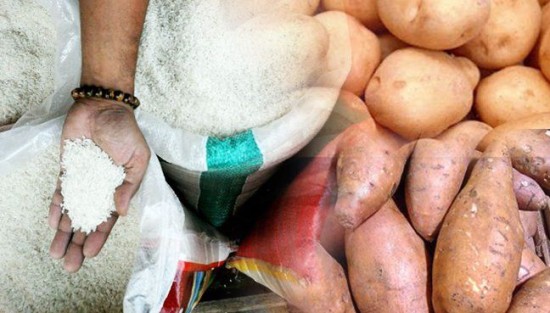A major food safety scandal involving fake rice recently rocked China; news reports suggested that the grains were made by mixing potatoes with industrial synthetic resin. There were also rumors of the “cheap but profitable” rice being exported to other Asian countries, including Singapore, Indonesia, Vietnam, and India.
The fake grains supposedly cannot be distinguished from natural rice when raw. The only way to identify plastic rice is by cooking it – it remains hard and is difficult to digest. One publication explained that soup cooked with plastic rice will form a plastic film over the top, which burns when heated.
Health experts are warning people that these grains, if consumed, could wreak havoc on the digestive system. According to an official from the Chinese Restaurant Association, eating three bowls of plastic rice would equal consuming one plastic bag!
News of the fake rice has been circulating on social media platforms like Facebook and mobile messaging app Whatsapp for a few years now. These reports suggest that the rice was initially sold in Chinese markets, mainly in Taiyuan in Shaanxi province. Now, people fear that it has found its way to other countries in Asia. The rice is reportedly sold only in small shops, not large supermarkets, making it harder to detect.
Hasan Malek, Malaysia’s Minister of Domestic Trade and Consumerism, said that people should not panic over the news until it is officially confirmed. “The news can be true or false; we don’t know,” he told Star Online. “We also don’t know if the fake rice has entered the country, but we cannot take such things lightly and will carry out investigations nationwide.”
Hasan said that an investigative team would focus on testing rice samples at small shops. “We will conduct our investigations, but I would urge consumers to come forward and report to the ministry if they come across such rice. All reports made will be treated confidentially.” He added that the plastic rice would be hard to detect if mixed along with normal rice.
ingapore’s Agri-Food and Veterinary Authority (AVA) also reacted to the news. “As part of AVA’s routine surveillance, imported rice is regularly inspected and sampled to ensure compliance with our food safety standards and requirements,” a spokesperson told The Straits Times. “We have not received any feedback on fake rice.”
The fake rice scandal is one of many food safety issues that the Chinese authorities have had to deal with. In 2010, a Shaanxi company was involved in adding flavoring to ordinary rice and passing it off as the more expensive ‘Wuchang’ rice. And in 2008, baby milk formula was mixed with a plastic compound called melamine. Six infants died during the time, while 300,000 others suffered from severe kidney problems.
We covered a few fake Chinese foods on Oddity Central as well. Four years ago we posted about about a strong “beef extract” additive used in restaurants to turn pork into beef, and in 2013 we had concrete-filled walnuts.
Fuente: www.odditycentral.com
